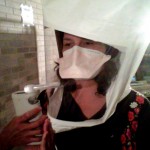With the departure of Hurricane Irene, many buildings throughout NJ and NY have sustained a wide range of water damage and require action to remediate or otherwise mitigate the impacts of water intrusion: mold, fungus and structural damage.
Timing is a key element in this response; immediate action is necessary to minimize the potential for mold growth within the building envelope. As in medicine, early detection leads to an early (and usually less expensive) cure. Time and water combined can grow to be an expensive and time-consuming enemy. Failure to respond promptly will very likely result in mold growth requiring significantly more demolition than if the condition is handled in a timely manner. What is the definition of “timely”? As soon as mold is discovered!
Experts Can Determine Proper Mold Remediation
Along with timing, selection of the proper remediation technique for the building’s water intrusion and moisture problem (removal, drying in place using fans and/or dehumidification equipment, cleaning, treatment with biocide, etc.) is essential for maintaining a safe building. Improperly implemented remediation procedures can result in cross-contamination and hidden mold growth areas which could adversely impact occupants as time passes while increasing overall remediation time and costs .
Water and flood remediation procedures vary and are dependent upon the convoluted mix of building materials, building design, furnishings, extent of exposure, and the source of the water. Water intrusion investigations and cleanup can be especially challenging in buildings such as multi-unit residences, hospitals or rehab centers, schools and older buildings. There are a wide range of environmental, health and safety (EHS) issues associated with commercial, industrial and institutional facilities; it is important to manage the project as well as the complex interaction between employees, contractors, and the public within a facility; the buildings themselves; and the physical surroundings where they are located.
Mold Remediation Services
An EHS mold expert will identify and eliminate sources of mold and other Indoor Environmental Quality problems. They will also provide a detailed project roadmap for cleanup and removal as well as project oversight for safe and effective remediation. Emilcott’s mold remediation strategy for safe and effective mold removal (with minimal damage to the building and reduced impacts to building occupants) includes the following steps:
Step 1: Initial Assessment
Locate the source of the moisture without deconstruction or disruption to the building and occupants. Determine the urgency of the mold problem and its impact upon workers or residents.












